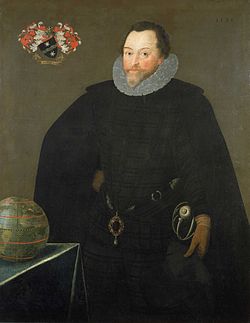This article needs additional or more specific categories .(March 2024) |

The Drake Jewel is a precious pendant given to Sir Francis Drake by Queen Elizabeth I to show her gratitude. The pendant is on display at the Victoria and Albert Museum (V&A) in London. [1] [2]



